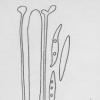
13-01-2026 07:28
 Danny Newman
Danny Newman
Chlorociboria glauca on indet. decorticate logThe

13-01-2026 08:43
 Danny Newman
Danny Newman
Tricladium varicosporioides on indet. decorticate

07-01-2026 22:22
 Danny Newman
Danny Newman
Tatraea sp. on indet. hardwood The Swag, Great Sm

13-01-2026 09:10
 Danny Newman
Danny Newman
Dasyscyphella chrysotexta on indet. decorticate ha

13-01-2026 10:13
 Danny Newman
Danny Newman
Cordieritidaceae sp. on indet. wood w/ Hypoxylon s

13-01-2026 07:14
 Danny Newman
Danny Newman
Neodasyscypha cerina on indet decorticate logThe S

15-01-2026 10:02
 Danny Newman
Danny Newman
Coccomyces sp. on fallen Rhododendron leavesPretty
Although it is a long time that I follow the discussions of the forum, I should perhaps introduce myself. I am Ibai Olariaga, a mycologist with background on Basidiomycetes, but I am becoming more and more interested in Ascomycetes. Three years ago I started to work on Pezizales in Stockholm, with focus on the genus Otidea.
But now an ascomycete of unknown genus keeps me busy. It was collected in North Sweden, Vindenfjällens nature reserve, on sandy acidic ground, in the neighbourhood of Anthelia juratzkana and Polytrichum sexangulare.
It mimics somewhat Mitrula paludosa. Ascomata gregarious, stipitate and pileate, 5-9 mm high. Head convex, margin inrolled and free, pinkish orange, 1.5-3 mm diam. Downside of the pileus floccose-fibrillose, white. Stipe tapering towards the apex, 6-9 x 0.5-1(2) mm, white, floccose-fibrillose, longitudinally somewhat furrowed. Spores slightly curved, with many small refringent guttules, sometimes 1-septate, with a hardly visible gelatinous sheath, 24-36 x 4.5-5 µm. Asci cylindrical, containing biseriate spore, with a blueing apical pore in Melzer. Paraphyses entangled, curved, hooked and branched, hyaline, with slightly refringent granules. I took the micro notes in vivo.
I do not find any species that fits my collection. Rather than Geoglossales, the hooked-branched paraphyses and the spores with gelatinous sheath lead to Cudoniaceae. I have not seen any stromatic tissue though. Cudonia and Spathularia appear to have a not blueing ascus pore.
Any idea? The species is quite striking. Many thanks in advance for your help.
Cheers,
Ibai.
?

Saludos,
Tomás Illescas
Echanté de te lire ici, IBai.
Amitiés,
Tomás Illescas

Unfortunately, I am still rather disorganised with my mycological machinery due to move onto the new address but as far as I can remember my two treatments I made several years ago - your fungus may be Sarcoleotia globosa. I remember such spores, asci (including the IKI reaction) and paraphyses. They could all perfectly match yours although I remember darker hymenial surface.
Cheers,
Neven

the micros actually fit Sarcoleotia! And yes, that species has a dark brown to blackish hymenium and a reddish-brown stalk, so is this an albino??
I learned that Nothomitra is closely related to Sarcoleotia, and actually the living spores of your fungus resemble those of N. cinnamomea as I have seen it (HB 7042, see DVD).My interes was caught at that time with the peculiarity that the nucleus is found far down near the lower spore end, where oil drops were few.
In N. cinnamomea the complete outer ascus wall stains pale red in IKI (not MLZ!) while pale blue after KOH-treatment. Possibly this is also the case with Sarcoleotia? I never saw a specimen of that.
But Nothomitra is also dark coloured and has an elongate pileus almost like in Microglossum.
Zotto
Hi,
Thank you for the answers! I have seen Sarcoleotia globosa several times in Sweden and my feeling is that the ascocarps are larger, the shape of the fertile part is more globose, and the colour is obviously much darker. On the other hand, the micro features roughly fit my collection, the stipe bears scales-fibrils and the ecology is similar.
Sorry Zotto, I did not have lugol at hand when I had the collection fresh. I have also considered the genus Nothomitra and your micro drawings of N. cinnamomea certainly remind of my collection . I see that there are two more species of Nothomitra, N. sinensis and N. kovalii. The former is also dark-coloured and MLZ negative, but I don´t find much information of the latter.
Can anyone provide further information of Nothomitra kovalii?
Thanks in advance once again!
Saludos Tomás, cuánto tiempo!
Ibai.

unfortunatelly I don't have Raitviir 1971 but a description by Azbukina 1991 (attached).
So your spores seem to be by far to big for N. kovalii.
Regards
Martin
Thanks Martin!
I do not understand much of the description but helpful to know that the spores appear to be smaller.
Ibai.
there is translation of description:
Nothomitra kovalii Raitv.
Frb from stipe and head, 3-5 mm high. Head almost spherical, wavy, pale-pinkish-ochraceous, 1,5-2 mm diam. Stipe cylindrical, with low longitudinal ribs, whitish, 0,5-0,7 mm diam.
Asci clavate, with amyloid reaction at walls all over, 8 spored, 75-100 x 6-8 mk. Spores 2-seriate, narrow-fusoid, 1-2 celled, hyaline, 19-25 x 2 mk. Paraphyses exeeding the asci, filiform, 1-1,5 mk diam, enlarged at the tips to 2-2,5 mk, bent.
At the soil, very rare, in september.
Distribution at Far East: Kunashir island - Mendeleev volcano. Total distribution: found only at Far East.
Thank you, much better now! :-)
There are some aspects that remind of the collection in question, but the spores of the description are far too short and narrower. I wonder if the original description gives similar measures.
Cheers,
Ibai.

Palmer 1997 ist quoting Raitviir's description:
http://www.landesmuseum.at/pdf_frei_remote/OestZPilz_6_0007-0016.pdf? (p. 12),
giving the same sizes. I think Azbukina is also just refering to Raitviir.
Regards,
Martin
Thank you Nina and Martin,
I will email her -may be she can send the original description, even though, as you point out Martin, the later descriptions seem to be quoting the original one.
I will keep you posted if I have new information!
Ibai.

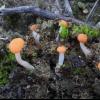
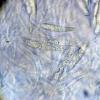
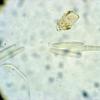
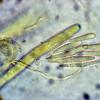
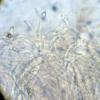
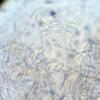
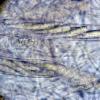
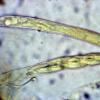
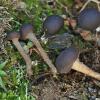
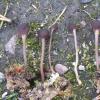
 Azbukina-1991-Nothomitra-kovalii-02-0001.pdf
Azbukina-1991-Nothomitra-kovalii-02-0001.pdf